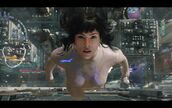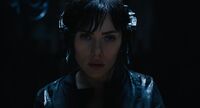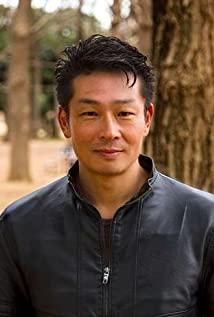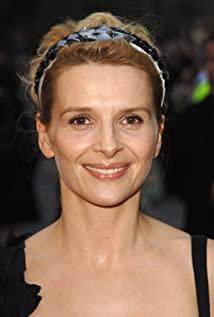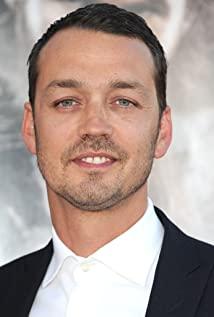First of all, I'm not a fan of Shell in the strict sense. I haven't read the manga, but I have seen the 95th version of the Shell directed by Mamoru Oshii, the fourth version of the movie, and two TV animations supervised by Kenji Kamiyama. So if you are an iron-in-the-shell fan, you are welcome to point out the flaws in my comments, and I also hope to be able to talk about the series with you more.
Alright, let's get to the point. When the final act of GIS was over and the credits began to roll, Kenji Kawai's famous soundtrack, composed for GIS in 1995, "II-Ghost City," rang in his ears. Following the music, the first word that popped into my mind was "Dong Shi Xiao frown." Therefore, Xi Shi's heart is ill, and he hides his heart. The ugly people in his heart see him, and he is beautiful, and he also holds his heart and hides his heart. When the rich people see him, they firmly shut the door and do not come out; the poor see him, and they take him away. The wife goes away. "
Throughout the whole film, it can be seen that director Robert Sunders not only wants to reproduce the successful parts of the 1995 version of Attack on the Shell in the film but also hopes to add new elements, such as old bottles of new wine. In a sense, the director has indeed "reproduced" the 95th edition of the attack in the shell—the opening major's classic high-altitude free fall; the fight with the "puppet" in the water; the dialogue with Bart on the boat; and the plot of the battle while thinking about the chariot. There are still too many places. The director is almost unchanged from the 95 version of the shell, from the two-dimensional to the three-dimensional. However, this copying brings a serious sense of incongruity—just like the incongruity in the movie where the members of the Nine Lessons speak to Daddy Monkey in English, and Daddy Monkey responds in Japanese.
Personally, I think that Oshii Mamoru's 95th edition of Attack the Shell is as big as the setting of the world view (such as the concept of full-body prosthetics, the functions of the nine public security classes, etc.), and every picture and dialogue are very good to promote the plot's development, and it is closely related to the thoughts that Oshii Mamoru wants to express. However, this does not mean that these elements can not be adapted to a different plot. The result of imitation is the lack of corresponding explanations and logical flaws. To give a few simple examples, in the movie, the Nine Section of Public Security, as a special police organization, has not been well explained, and the early villain's explanation to Kuze Hero is also very abrupt (such as why he associates himself with more people to connect with the ghost of the ghost-this was explained in an episode in the TV version), and at the end of the movie, as a villain company boss with powerful mercenaries and advanced weapons, he was unexpectedly treated by the teacher Aramaki with a painless It is even more inexplicable that the innocent "murderer" is directly shot and killed—the judicial process insisted upon by the police has lost to the jungle law of the jungle? These conceptual deficiencies and logical flaws make audiences who have not been exposed to the shell feel that the plot is out of touch and confused.
I personally think that the major that Mamoru Oshii focuses on is different from the major that Kenji Kamiyama focuses on. There is no further interpretation here. Personally, I can only talk about my superficial understanding of the image of the Major in the 1995 version as well as my understanding of the image of the Major shown in this movie. The 1995 version of the Major can be said to be the carrier of the thoughts that Mamoru Oshii wants to convey—thoughts about the nature of the individual and existence: "The current me is just a virtual personality composed of a prosthetic body and an electronic brain." His suspicions began, and despite the headmaster's objection, he combined with the puppet master's ghost.
The last sentence is, "Where should I go now?" "The Internet is infinitely broad" shows that major has broken through the limitations of individuals and moved towards the essence (or the other side of the Internet, which is opposite to the fragmentation and obsession of individuals on this side). In this attack, Mamoru Oshii separates the personal entity from the ghost through the two settings of prostheticization and electronic brain. The personal entity is not the essence of existence. The essence of existence requires the soul to transcend the personal entity. At the same time, it also reflects the challenge of the definition of individual existence by artificial intelligence (AI) in cyberpunk culture.
From the proposition of individual differences, the director wants to discuss the existence of the major. Distinguishing individuals is, of course, simpler and easier to accept than defining individuals. So in the movie, the concept of ghost is also weakened into memory and emotion, which is the "personal consciousness" mentioned in the 95th edition of Major and Bart's conversation on the boat. "What we did defined us," the major said at the end. The unique memories and emotions of an individual are an important consideration in defining the individual in this film. The Widow Sister's version of the Major does indeed look like a "flesh and blood" Major, which makes her more human-like than the animation. So, at the end of the movie, the major finally returned to this society, to the mother-daughter emotion, and to the "ego". This image is undoubtedly a warm ending that is easily accepted by the audience, but for 95's suspicion that memory and emotion confine individuals to entities, I wonder if the ending of the movie is a regression into sadness?
"When I was a child, I said everything I said as a child." I felt like a child, and I thought like a child." "Only when I became an adult did I abandon my childlike innocence." The film version of the Major did not break away from the child in the end. I personally think that the image of Hero Kuze in the "Individual Eleven" incident of the second TV version of Ghost in the Shell is quite successful. Kuze is full of idealism and charisma, allowing him to quickly gain the trust and love of the refugees and become a leader. And Kuze's ideal is to build a Datong society without class distinction in the online world. This lofty revolutionary ideal, which is separated from vulgar tastes, further enhances Kuze's image as a revolutionary hero. On the other hand, Kuze's near-perfect personal image and utopian vision also brought him a tragic ending—he was used by the villain Hita, fell into the trap of "individual eleven," and was eventually assassinated and became the currentprotagonist. There are victims of the political system.
However, in this movie, the character of Kuze Hero is just an individual who is determined to take revenge-how he looks at the second, how embarrassing he looks, and it can even be said to violate the kind created in "The Eleven" idealized image. Perhaps what the two have in common is to fight against a powerful organization with personal strength, but Kuze in the movie, as a failed product of the villain's company's experiments, is committed to revenge for the villain's company's behavior until his death. This purpose is very different from the revolutionary ideals and feelings of Hero Kuze in the TV version.
In addition, Kuze's "Assassin's Creed" style appearance (the second-level burst), the hairstyle that killed Matt in the later period, and the vague words from the beginning to the end (the movie can be explained as the failure of the villain company's experiment) Result) also puzzled me: what kind of grudges do you have with Kuze, director? Regarding the images of other people in Lesson Nine, among all the GIS series, my favorite character is actually not Major, nor Bart, but Togusa, who is the least prostheticized. Probably because he is the closest to the image of a "human" with flesh and blood, pain and death, and feelings of the two TV versions.
I can understand that the protagonist in the Attack on the Shell series is the major, and the carrier of Oshii Mori's thoughts in the 95 version is also the major, plus at most the muscular man Batsan and the resourceful and resourceful Chief Aramaki (Father Monkey). However, in the movie version, the portrayal of the others in the Nine Lessons is a little rough-Bart is more like a killer, the shape of the teacher of the Aramaki is really disappointing, and Togusa has become a dispensable. A set of small dragons The scene where Bart feeds the dog can be one of the few bright spots in character development. By the way, the Batsan hero who I am looking forward to the most saving the beauty, every time when the major is on the verge of desperation, the scene where he desperately shouts "Suzi" does not appear. This time, it was the sniper Sato who rescued the major, which is interesting.
A dead homesteader friend of mine has always instilled in me the idea that all attempts to three-dimensionalize a two-dimensional work are blasphemy against this two-dimensional work. At first, I didn't take it seriously, but after watching this live-action film, I can more or less understand the point of view of my dead housemate. For fans of Attack in the Shell, this movie can be said to deviate from the core of Attack in the Shell, and drawing a tiger is not an anti-dog. For ordinary audiences who have not been exposed to the shell, the film's lack of some conceptual settings has increased the difficulty of understanding the film.
Perhaps the only meaning of this film, as a dear friend in the short commentary said, is that it made a small contribution to the promotion of the Attack on the Shell series. Perhaps what Robert Sunders didn't expect was that when he was racking his brains to continue the glory of the Attack on the Shell series, he also succeeded in making the film an unsuccessful "puppet" of the 1995 version of Attack on the Shell.
Finally, let's say something else. I watched the premiere of the Events Cinema in Australia. The 7 p.m. show was not too crowded. I bought the ticket a week and a half in advance. Although it is not 3D, it is a giant screen version. The location is right in the middle, which is very ideal. When the movie was about to start, there were two people sitting on my left: a man and a woman, both Chinese, and they were supposed to be male and female friends. I thought about it too much, turned off my phone, sunk into my seat, and got ready to enjoy the 120-minute movie. At the beginning of the movie, when Paramount's classic star row opened, the girl sitting next to me asked the boy: "What company is this?" The boy said, "This is Paramount Pictures." I heard it clearly, and I felt a little unhappy in my heart, and my body slanted away from them.
However, as the film begins, the rustling discussion between the couple shows no sign of stopping. Seeing the realistic electronic brain, the girl said: "Wow! Seeing the main strip naked and falling freely from the high-rise building, the girl exclaimed, "Wow!" "Hey, I didn't understand," the girl said, prompting the boy to explain, "blah blah blah."
So a good viewing experience was ruined like this. I managed to hold back my anger, taking into account that there were other foreigners sitting in front of and behind the audience, and I didn't say "shut up!" to them. Now that I think about it, I regret it a little. It also reminds young couples who go to the cinema to watch movies: please don't whisper when watching movies. Your dog's abuse is only one aspect. The sound of Twitter really, very, very much affects the viewing experience of others.
View more about Ghost in the Shell reviews





